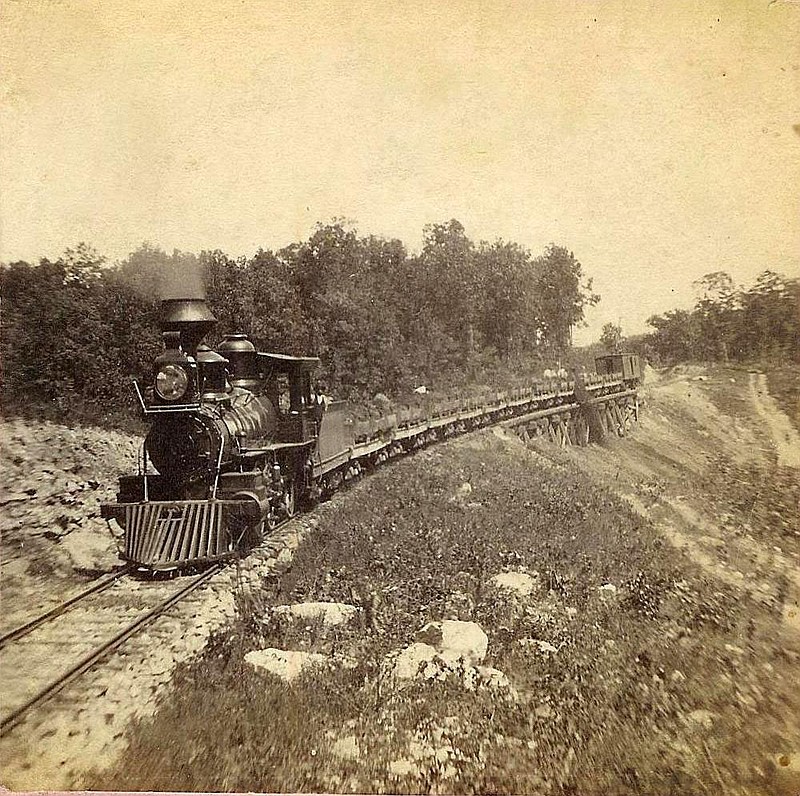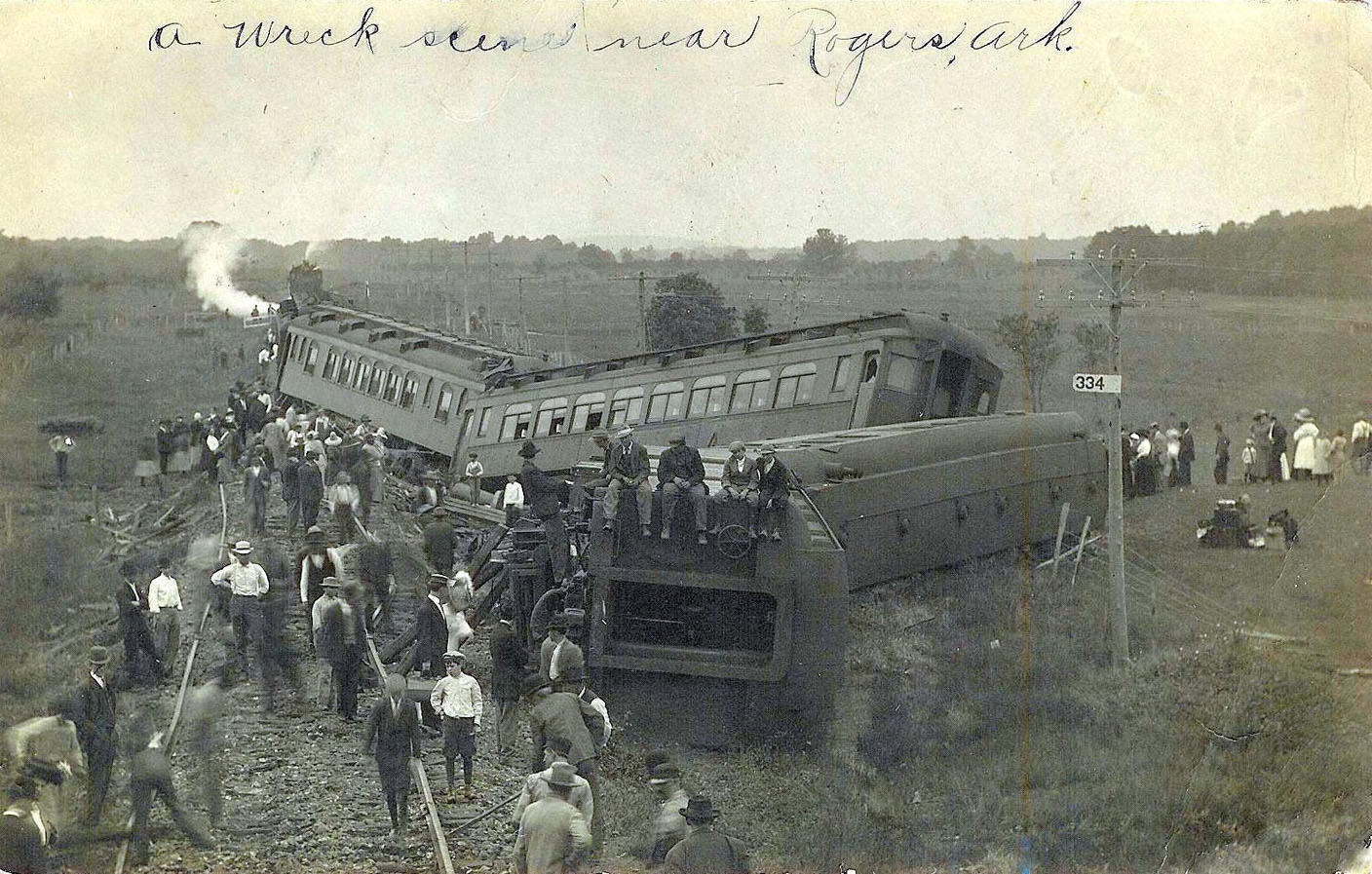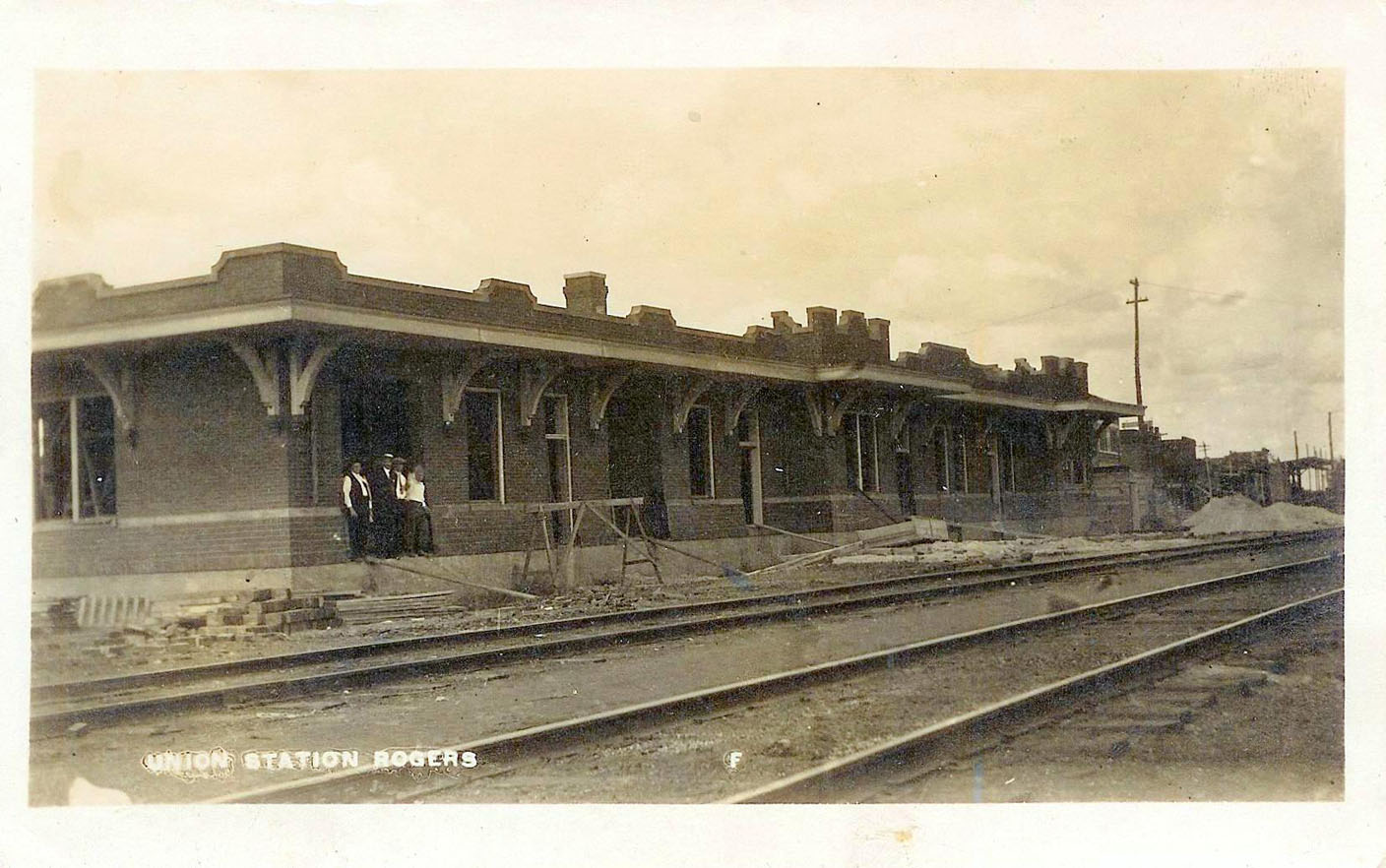As early as 1878, the Frisco Line's executive committee had been meeting to address the threat of other railroads building a rail line through Northwest Arkansas.
A rail line through the area would promote a long haul to Texas in the future. Another good reason was that there were unlimited supplies of hardwood to make suitable railroad ties through Northwest Arkansas.
In April of 1880, surveying work started from Peirce City, Mo., to Ft. Smith, then on into Texas.
In Benton County, the line pretty much followed the "Old Wire" road. Grading for laying the rail to the Arkansas border was completed in August of 1880. The hope was to get rail service to Fayetteville.
I find it interesting that the Frisco line didn't go through any established community when it came through Benton County. All the communities like Garfield, Avoca, Rogers and Lowell came into being when the railroad line came through.
Bentonville people felt the Frisco line should go through Bentonville. They made repeated attempts to talk the railroad into doing a route that passed through their community. There is much folklore as to why the town didn't get the railroad, but I do not believe any of it is correct.
The railroad chose to build the rail line along a natural divide through the county, that's why it didn't come through Bentonville. Another route would greatly increase the cost of construction. What was to become Rogers also had many springs that could provide water for locomotives.
When the surveying was being done, B. F. Sikes talked with the railroad agent regularly and made them a proposition for what he could do if they came across his property. B. F. Sikes owned 160 acres of land along the route that he inherited from his father, Robert Sikes.
In the fall of 1880, the railroad decided Rogers would become a town. Mr. B. F. Sikes gave the railroad the required right-of-way and farmers adjoining his property gave an additional $600. Mr. B. F. Sikes platted the town out in February 1881. It was comprised of fifteen blocks, which contained 180 lots. All 180 lots were sold in the first year.
B. F. Sikes's brother, Rev. J. Wade Sikes, retained 40 acres next to B. F. Sikes. The people of Rogers donated a 20-acre tract of land as a site for the Frisco railroad. Part of what was built was a six-stall roundhouse, along with a passenger depot and freight depot.
But after about 10 years, both the freight depot and roundhouse were no longer needed. Unlike the Rogers people, there were quite a few landowners not willing to donate or sell their land to the railroad. This caused the railroads to have condemnation hearings at the Benton County court.
The name of the town was left totally up to the company, but no input was given by the town's new residents. So the name Rogers was given to the town, named after Capt. C. W. Rogers, who was the general manager of the Frisco railroad.
It is not known when the first train reached Rogers. The city of Rogers was actually established in February of 1881, when the town was plotted. The first passenger train came into Rogers on May 10, 1881. That is the day the town recognizes as its anniversary. Rogers didn't file incorporation papers with the Secretary of State's office until June 8, 1881.
We do not know the population of the town when the railroad came through. But by the end of the year 1881 the population was about 600 people. The year after that, it had increased to about 1300 people.
On the town's first anniversary thousands of people came to help celebrate the special day. There were special excursion trains that came from Fayetteville, Springfield, Peirce City and other locations.
The first mayor of Rogers was J. Wade Sikes. B. F. Sikes was the first postmaster, having moved the post office from Cross Hollows to Rogers.
As with Rogers, several other communities were moved from their original locations to be on the railroad line. One of these towns was Avoca, which at that time was located where Brightwater is located now.
Mr. Albert Peel moved his store to be on the railroad line and built a house. He was the postmaster in Avoca, and when he moved his store, he took the name Avoca with him. The community that was Avoca was renamed Brightwater.
Mr. Peel gave a right–of-way across his land. He also gave land for a depot, siding space for loading rail cars, a stockyard, and a tie yard. He is also credited for laying out the town.
Lowell also wasn't established until 1881, when the St. Louis & San Francisco railroad came through. A town did exist about one mile southeast of where Lowell is today, which was called Mud Town. Once Lowell was established, people in Mud Town moved to Lowell, making Mud Town a ghost town.
Another new community was established in the northernmost part of the county around the rail line. It was called Crowell, later to be named Blansett. The town was surveyed into lots in 1883 and was renamed "Garfield" in honor of the assassinated President.
Randy McCrory is part of a group called Vintage Bentonville. The group hosts an online museum for Bentonville / Benton County at vintagebentonville.com. They also host two Facebook pages called Historic Benton County and Vintage Bentonville. Email him at [email protected]



